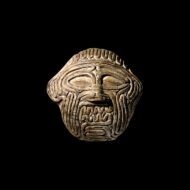Play computer games?
(It’s a directory. Clicky on the files, then come back here when you’re done.)
What you’re looking at is the very first adventure game.
More specifically, its DNA. When you compile those files on a PDP-10 (an old mainframe computer, back from the days when men were real men and computers were the size of rooms), it turns into magic.
Will Crowther wrote the game Adventure in 1977.
His source code was cleaned up, ported around, expanded. I played a version of Adventure, expanded by Don Wood, on the university mainframes in 1990. Others, having played it, wrote their own versions of the game. Adventure games (as they became known) became easier to use and play, developing graphical interfaces and the ability to have multiple simultaneous players…
The original game was presumed lost for ever.
In 2005 a backup of the original code was found and restored. Digital Humanities Quarterly have been delving into the code, archaeologically deconstructing it and finding its treasures.
This is the game equivalent of African Eve. In a very real way, all adventure games are descended from this code.
You can play the Crowther/Woods version online.
For anyone interested in the development of computer games, this is a little slice of history.


Ah, thank you for the memories! I remember my “stint” as a text adventure writer. I was SO addicted, but eventually bored, and wanted so much to write one. Talk about biting off more than I could chew. Four days to build a “room” with all the objects and “container objects” … agh!
I still have the disks with all my files – I SO wish I still had an ancient machine that would run them.
Great post!
I wrote a extremely primitive one on my Texas Instruments home computer. In BASIC, without the benefit of GOSUB, which for some reason I didn’t know existed.
I was quite pleased with myself for figuring out that if you say “Goto 5000” and then on line 5050 say “Goto 200”, you can send your control flow off somewhere, do some stuff, and then send your control flow back. Who needs subroutines?
Edsger W. Dijkstra.